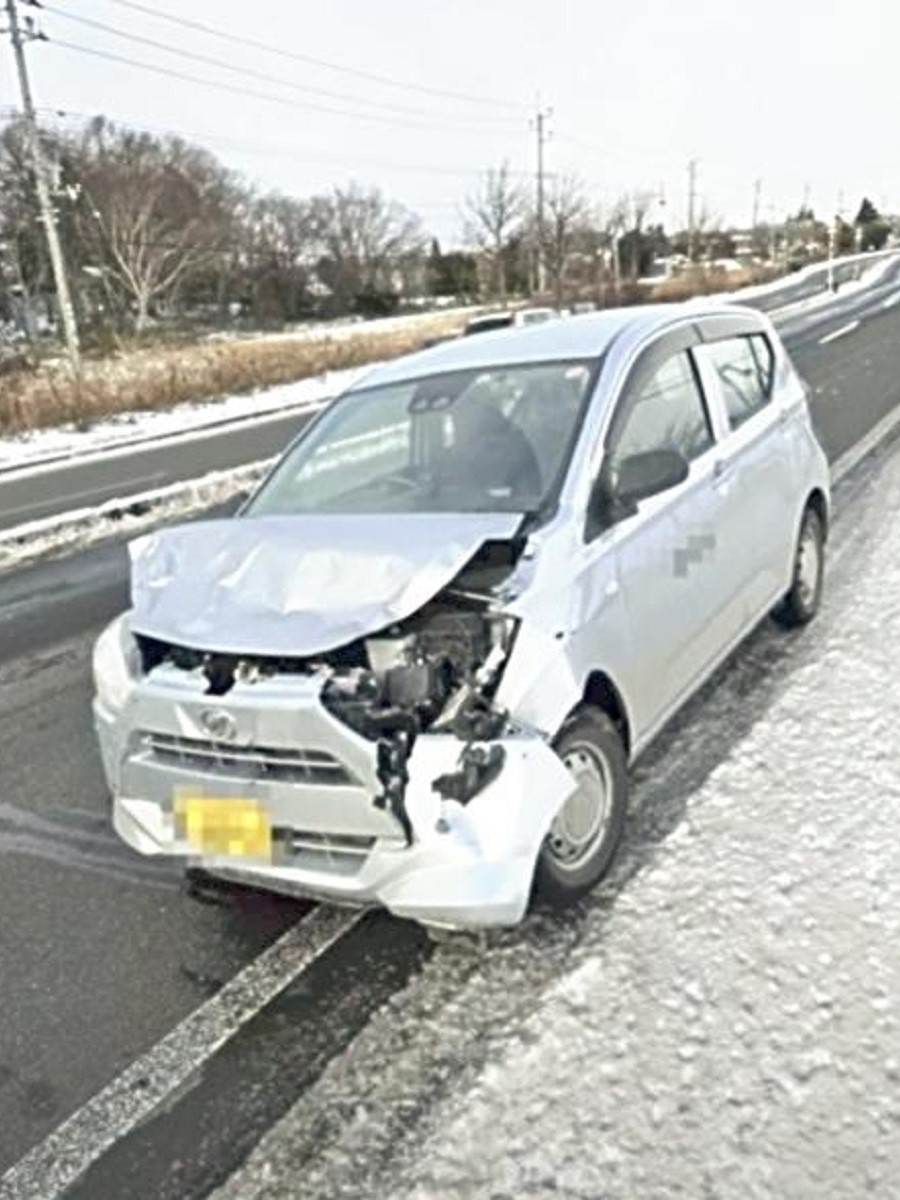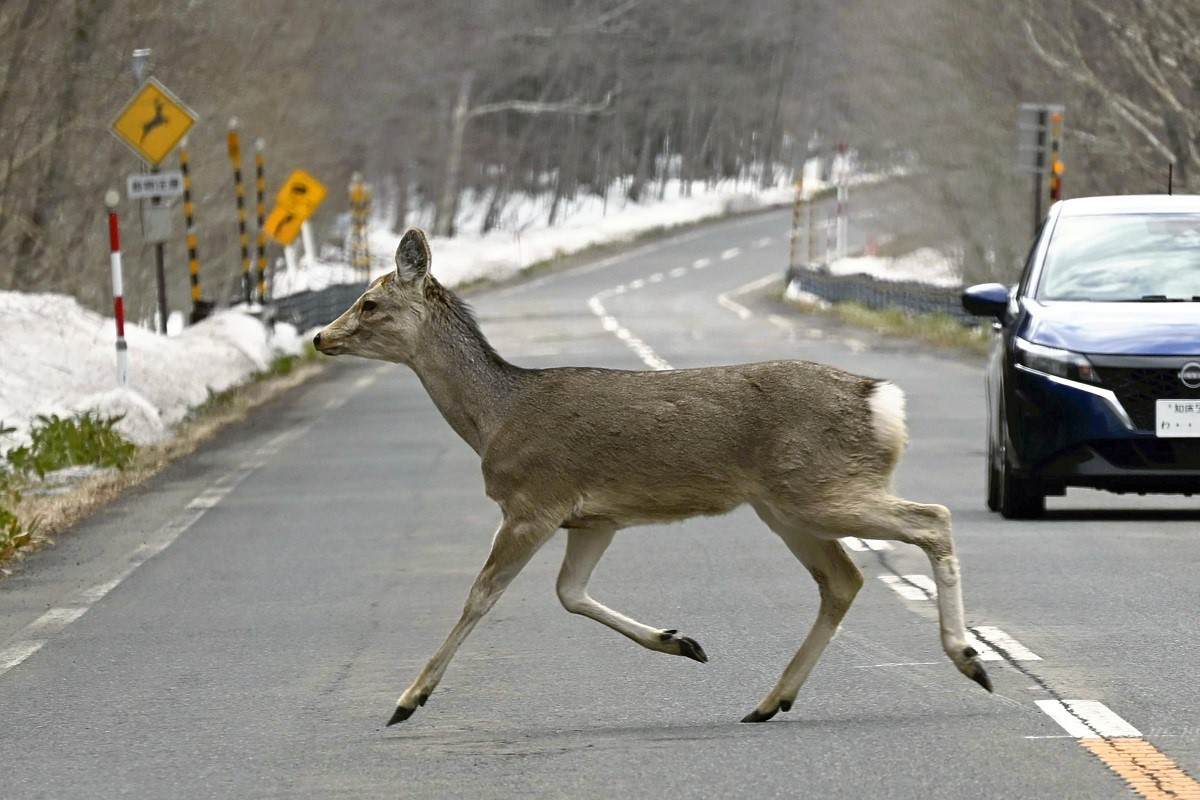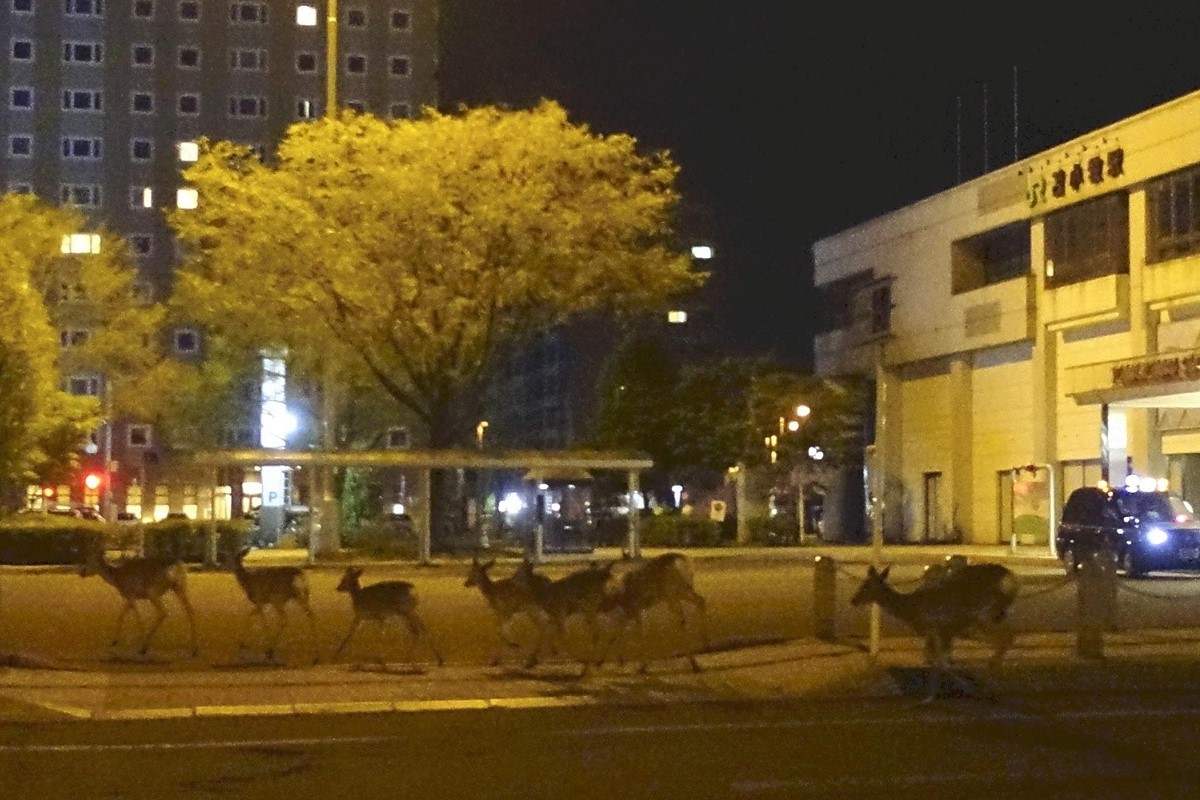Deer-Involved Traffic Accidents Surging in Hokkaido; Growing Population, Decreasing Caution Leads to More Collisions

A car that was damaged as a result of a collision with a Yezo sika deer (This image was taken from a video on the official YouTube channel of the Hokkaido prefectural police.)
12:34 JST, November 4, 2024
Traffic accidents caused by Hokkaido’s Yezo sika deer have been surging, including collisions with deer and crashes due to swerving to avoid the animal.
According to statistics compiled by the traffic planning division of the Hokkaido prefectural police, 2,938 accidents involving the deer had occurred this year as of the end of September, up 319 from the same period last year.
Since most deer-involved accidents occur during the months of October and November, during breeding season, when the deer are especially active, some believe that this year’s total number of deer-involved accidents might surpass the record high of 5,287 reached last year. This October, a life-threatening accident involving one of these animals occurred in Chitose, Hokkaido.
Serious accidents
At about 4:50 p.m. on Oct. 13, a man in his 40s riding a motorcycle on National Route 453 alongside Lake Shikotsu had just passed through the Shikotsu Tunnel when a Yezo sika deer suddenly ran out of some bushes along the roadside. The motorcycle collided with the deer, causing the rider to fall off and suffer severe trauma across his whole body; he remained in a coma as of the end of October. According to a driver of a car who had been on the road behind the motorcyclist and witnessed the whole accident, the deer ran off after the collision.
Nearly 40% of all Yezo sika deer-involved traffic accidents occur in October and November. Naturally, the more accidents occur, the more risk there is that some of them will be serious. “We want people to beware of deer rushing into the road during the current period of the year,” an official at the traffic planning division said. This year is not the only time a serious accident has been caused by deer running into the road: similar cases occurred in other parts of Hokkaido in 2023, including one fatal accident in Noboribetsu in May and another in Rankoshi in August.
Doubled in 6 years
Hokkaido police statistics show that the number of traffic accidents caused by deer has been increasing since 2017.
In 2017, there were 2,430 deer-involved accidents, a number which rose to 2,834 in 2018 and 3,188 in 2019. Over the six years from 2017 to 2023, the number of accidents caused by the deer more than doubled, reaching 5,287 in 2023.
However, the Hokkaido prefectural government estimates that there were between 650,000 to 690,000 Yezo sika deer in Hokkaido through fiscal 2021. The number has been rising since then, to 720,000 in fiscal 2022 and 730,000 in fiscal 2023. But the rate of increase in deer population is not as high as the rate of increase in deer-involved accidents. Why is this happening?
“The deer have learned that roadside grasses are delicious,” explained an official at the Hokkaido prefectural government’s wild animal control division. While the deer were cautious about humans and vehicles in the past, they gradually got used to them and apparently now gather at roadside “feeding sites,” according to the division.
“We humans cannot change the behavior of the deer. The only way to prevent accidents is for humans to be careful of deer,” the official said.
The websites of the Hokkaido prefectural police and government include a list of points for people to keep in mind. For example, since deer usually move in groups, if people see a deer, they should expect there to be others nearby. Additionally, deer will sometimes stop suddenly in the middle of a road in reaction to the lights and sounds produced by a car. Furthermore, 80% of deer-involved traffic accidents occur at night, according to the list. The official YouTube channel of the Hokkaido prefectural police offers a video about deer-involved accidents to further raise public awareness.


Left: A Yezo sika deer crosses a road in Teshikaga, Hokkaido, in March 2023.
Right: A group of Yezo sika deer walk in front of JR Tomakomai Station, in Tomakomai, Hokkaido, in the early hours of May 16.
Insurance payments ballooning
According to the Hokkaido branch of the General Insurance Association of Japan, a group of non-life insurance companies, the total amount of insurance benefits paid by non-life insurance companies due to car-deer collisions amounted to ¥676.2 million for 1,085 cases in October and November 2023 alone.
Payouts were also high in 2021 and 2022, at ¥624.2 million and ¥594.3 million, respectively, putting pressure on these companies.
The increase in the amount of insurance benefits paid is caused not only by the growing number of accidents but also by rising repair costs for more precisely made and sophisticated car parts. “If payouts continue to rise, these companies will need to consider raising insurance premiums in the future,” an official at the branch said.
"Society" POPULAR ARTICLE
-

M4.9 Earthquake Hits Tokyo, Neighboring Prefectures
-

Israeli Tourists Refused Accommodation at Hotel in Japan’s Nagano Pref., Prompting Protest by Israeli Embassy and Probe by Prefecture
-

M7.5 Earthquake Hits Northern Japan; Tsunami Waves Observed in Hokkaido, Aomori and Iwate Prefectures
-

Tsukiji Market Urges Tourists to Avoid Visiting in Year-End
-

M5.7 Earthquake Hits Japan’s Kumamoto Pref., Measuring Upper 5 Intensity, No Tsunami Expected
JN ACCESS RANKING
-

Tokyo Economic Security Forum to Hold Inaugural Meeting Amid Tense Global Environment
-

Keidanren Chairman Yoshinobu Tsutsui Visits Kashiwazaki-Kariwa Nuclear Power Plant; Inspects New Emergency Safety System
-

Imports of Rare Earths from China Facing Delays, May Be Caused by Deterioration of Japan-China Relations
-

University of Tokyo Professor Discusses Japanese Economic Security in Interview Ahead of Forum
-

Japan Pulls out of Vietnam Nuclear Project, Complicating Hanoi’s Power Plans






















